Ask Ethan #69: Is our Universe escaping us?
As dark energy takes over and distant galaxies accelerate, what are we losing, and what does that mean?
“What is that feeling when you’re driving away from people and they recede on the plain till you see their specks dispersing? — it’s the too-huge world vaulting us, and it’s good-bye. But we lean forward to the next crazy venture beneath the skies.” –Jack Kerouac
I’ve gotten a lot better at goodbyes as I’ve gotten older, but most of us still aren’t ready for the great truth of the cosmic goodbye that’s in store for us. This week, I’ve gotten some excellent questions and suggestions that you sent in, but my favorite way to start off the new year comes from Joaquin Bogado, who wants to know about the galaxies disappearing from our view:
In the blog post The Disappearing Universe, you make me realize that there is a lot of information escaping our universe at every single moment. My questions are
1) How this affects the Big Bang theory and the age of our Universe?
2) Is possible to know how much of the Universe already disappeared?
Let’s start off by talking about what it means that things are disappearing, and let’s do that by going all the way back to the idea of the Big Bang.
As simply as possible, the Big Bang sets us up to have a hot, dense, expanding Universe, where the fabric of spacetime itself is what’s expanding. All the matter and radiation in it dilutes, sees its density drop and gets farther and farther apart as the volume of space expands. At the same time, however, all the matter and radiation also exerts a tremendous gravitational force, trying to pull the Universe back together again.
This is the great cosmic struggle: between expansion and gravitation. For billions of years, an observer would have been uncertain as to which one would win.
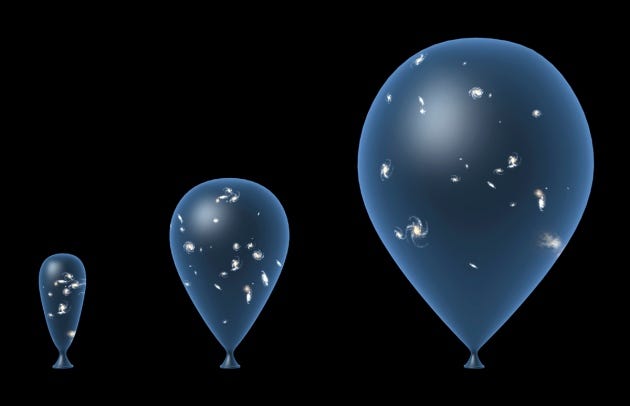
Would gravity win, causing the Universe to reach a maximum size, reverse its expansion and recollapse in a Big Crunch?
Would the expansion win, causing the Universe to expand forever, never ceasing, with things getting arbitrarily far apart and ending in a Big Freeze?
Or would we live in a case right on the border, where a single additional atom would recollapse the Universe, where the expansion rate asymptotes to zero but never reverses: a critical Universe?
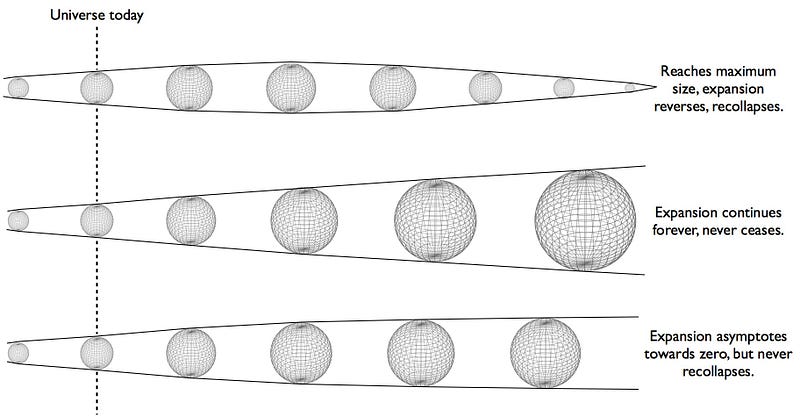
While these fates are very, very different from one another, they all have one thing in common. Take a look out at the Universe today, at any of the galaxies out there. What you can see — at the very limit if what’s visible — is a galaxy whose light is only now reaching our eyes after journeying across the Universe.
After spending billions upon billions of years traveling on a photon’s lonely journey through the expanding space separating us, it finally arrives at our eyes. After all that time swimming upstream against the expanding Universe, it caught us.

As time went on, for the first 7.8 billion years of our Universe, the light from more and more galaxies began to catch up to us.
Why?
Because the Universe was decelerating, meaning that even though the Universe was expanding, and even though these galaxies were getting farther and farther away from us, the speed at which they were receding from us was getting less and less. As a result, galaxies that were invisible to our eyes initially, because the separation was too great, finally came to be within our reach.
As time went on, more and more of the Universe became visible. If all that were present in the Universe were matter and radiation, this would have continued forever, no matter what our fate was. More of the Universe would be accessible, the deceleration would continue, and the only question would be whether the recession speeds of those galaxies would:
- Become zero, reverse, and start heading towards us (Big Crunch).
- Decrease but always remain positive, receding away forever (Big Freeze).
- Or asymptote to zero, never reaching it but never reversing (Critical).
But as the energy density continued to drop as the Universe expanded, it revealed something remarkable: there was an intrinsic amount of energy to space itself, a type of dark energy that was present.
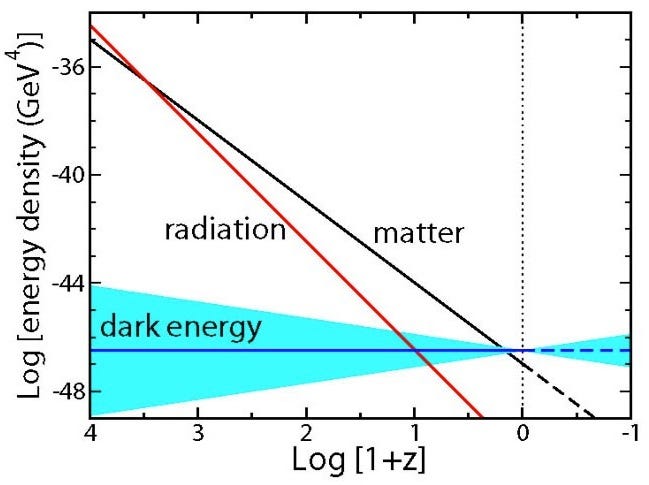
It wasn’t until the matter and radiation density dropped precipitously — a process that took billions of years — for this dark energy to become discernible, and it took 7.8 billion years from the Big Bang for dark energy’s effects to change the cosmic story.
Instead of decelerating, beginning right at that moment, when the dark energy density became large enough to be one-third of the total energy density in the Universe, distant galaxies began accelerating away from us. This meant that instead of slowing down in their recession from us, those speeds began increasing!
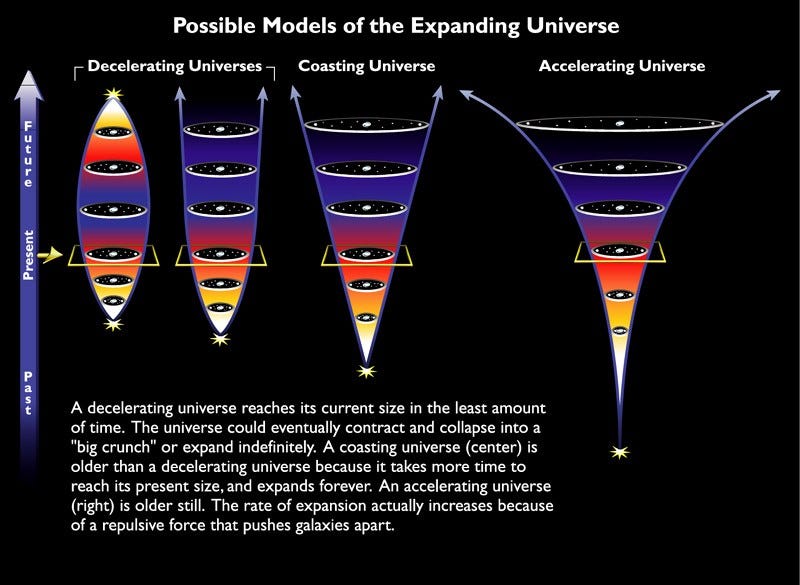
All those galaxies whose light has already reached us is still reaching us; the accelerating Universe hasn’t changed that.
But for many of those galaxies, we’ll never see any new light from them: only the light they emitted long ago, before the present age of the Universe. Think about why that is.
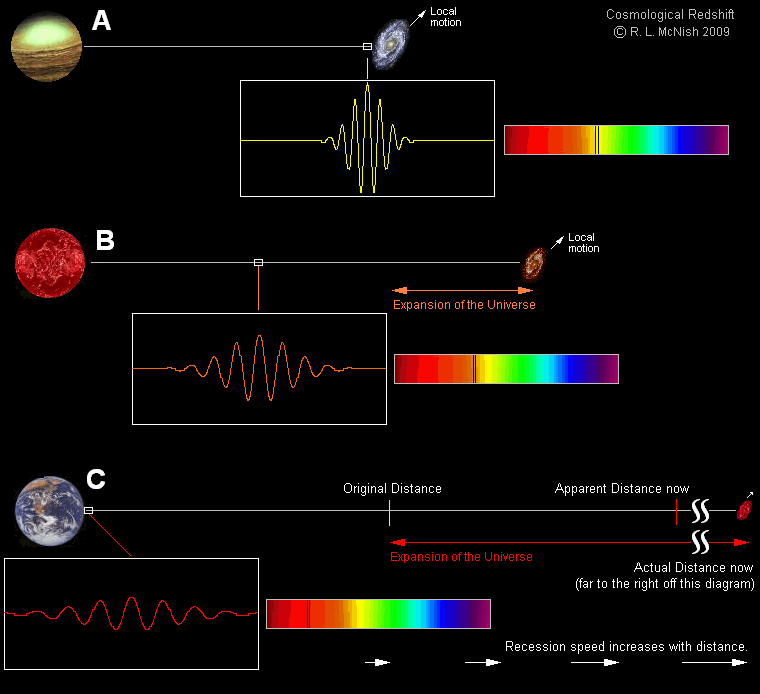
A distant galaxy emits light in the expanding Universe. The space between ourselves and that galaxy continues to expand, but the photon still makes its way towards us. Since galaxies are continuously emitting light, there’s not only light reaching us now, but there will be light reaching us into the far future!
But also, think about where that galaxy is today. Think about the expanding, accelerating Universe. And think about how vast that Universe is today.
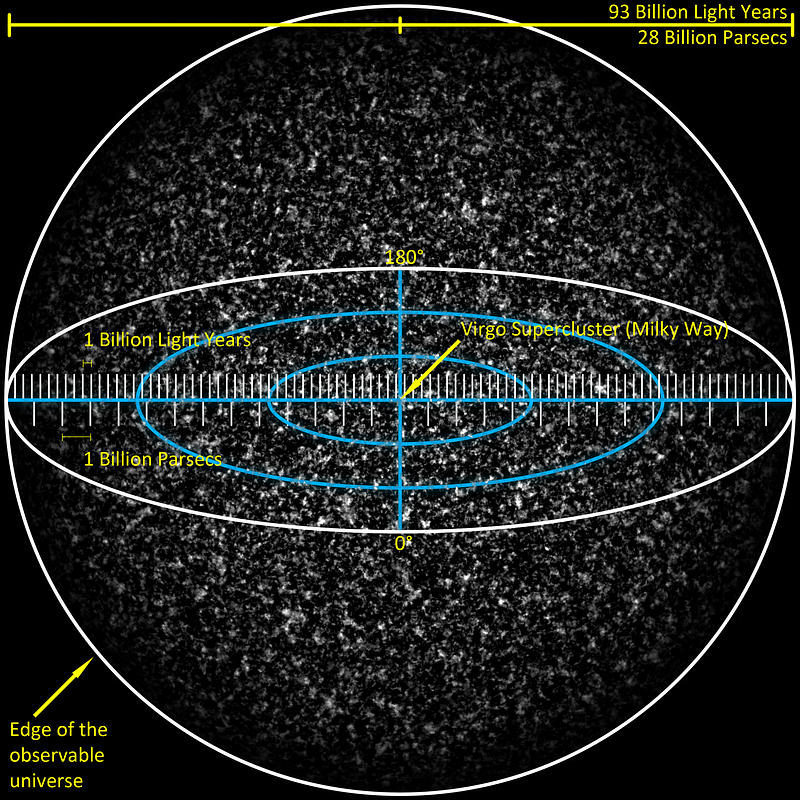
The figure presented here is almost up-to-date: our observable Universe is roughly 92 billion light-years in diameter, and contains at least hundreds of billions (and possibly trillions) of galaxies.
The thing is, any galaxy that’s farther from us than about 14 billion light-years is no longer emitting light that’s visible: the expansion of space between that object and ourselves is happening at such a rapid pace that a photon emitted today will never reach us! If you calculate how much of the observable Universe is contained within a sphere of radius 14 billion light-years and compare it to how much is contained within a sphere that’s 92 billion light-years in diameter, you find that we’re only still connected to about 3% of the galaxies: the rest are gone forever!
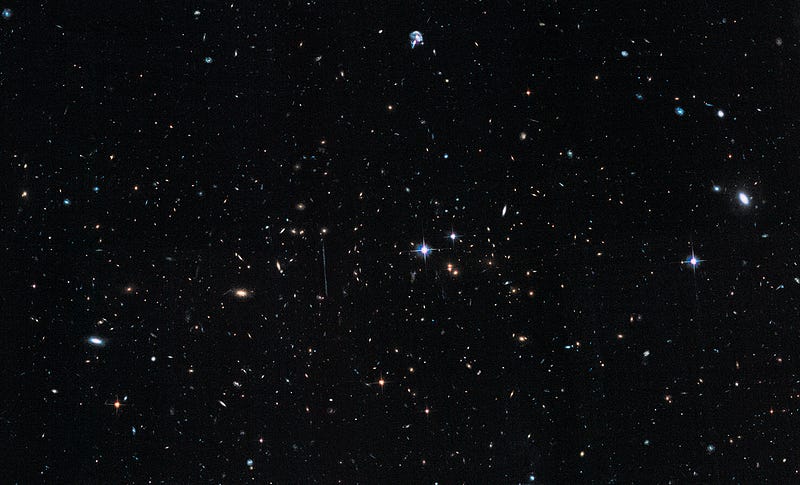
Over time, more and more galaxies and galaxy clusters will leave our horizon as well. This doesn’t mean we can’t see them any longer, it only means we can’t reach them anymore. Not if we had an ultra-relativistic space ship, not if we sent them something at the speed of light.
But the light we emitted billions of years ago may still be reaching them! It’s just that, much like the light coming from them and arriving at our eyes:
- there’s a finite amount of it,
- it’s incredibly redshifted,
- it’s time-dilated, meaning that events there are stretched out over time,
- and its flux gets progressively lower and lower over time.
In order to detect these more distant galaxies, they not only appear redder and redder, we have to “leave the shutter open” for longer in order to even see them at all.
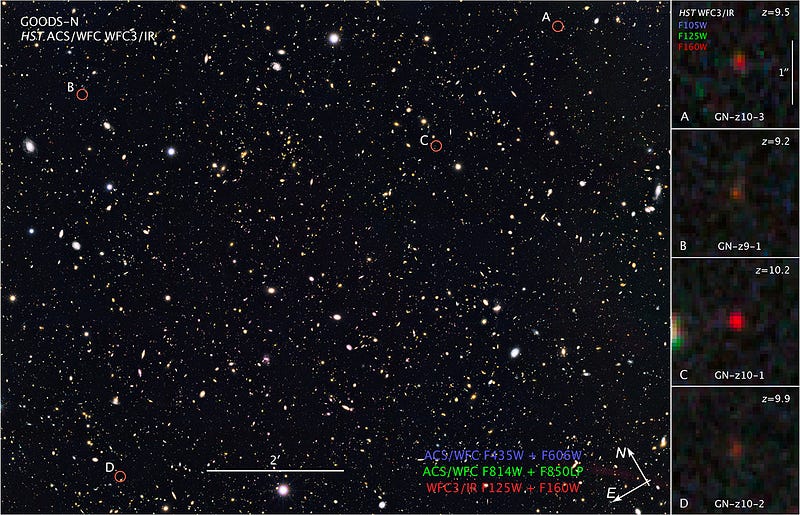
If there were no dark energy — if there were no acceleration or disappearing galaxies — the Big Bang could have occurred precisely in the same fashion, but our Universe would be much smaller today, galaxies would be closer together, we would see more of them, they’d be less redshifted, and the Universe would be expanding more slowly, with every galaxy decelerating. Instead of galaxies disappearing from our view, which presently occurs at a rate of approximately one every three years, new ones would be appearing to us as time went on!
And while no galaxy has literally disappeared to the point where it’s invisible, 97% of them have disappeared in the sense that they’re unreachable to us, and that the light they’re emitting today will never reach us. The galaxies are still visible, but only due to their old light.

And that’s how our disappearing Universe works, and what it means for galaxies to be escaping from our view. Thanks for a great question, Joaquin, and if you have a question or suggestion for the next Ask Ethan column, send it in! Next week’s answer just might be yours!
Leave your comments at the Starts With A Bang forum on Scienceblogs!





